Directions: The ACT Science passage below is followed by several questions. After reading the passage, choose the best answer to each multiple choice question. You may refer to the passage as often as necessary. Calculators may NOT be used test.
Passage V
Suppose a car has an oil leak, such that one drip of oil occurs each second. As the car drives down the road, it will leave a trail of oil behind it which could be used to describe the car’s motion.

Constant Speed
When the car is travelling at constant speed, the oil drips are regularly spaced. The average velocity of the car can be established by taking measurements of the oil drips. The average velocity of the car is equal to the distance traveled divided by the time taken. The car travels at constant speed for the first 10 seconds. Table 1 shows the distance traveled by the car during the first 10 seconds.
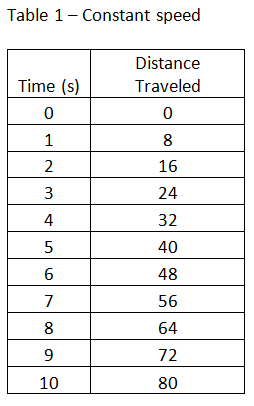
Acceleration
When an object speeds up, the rate of acceleration can be found by investigating the change in velocity and the time taken to make the change. Table 2 shows the car’s velocity over the next 10 seconds of its motion.
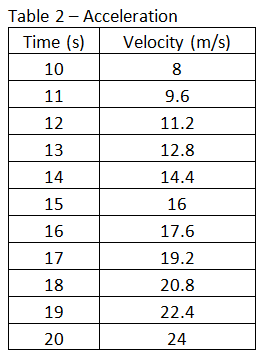
Deceleration
When an object slows down, the rate of deceleration can be found by investigating the change in speed and the time taken to make the change. Starting at t = 20 seconds, the driver applies a constant breaking force to bring the car to rest over the next 10 seconds. Figure 2 is a plot of the velocity versus time over the entire duration of the car’s motion from (t=0 to t=30 seconds).
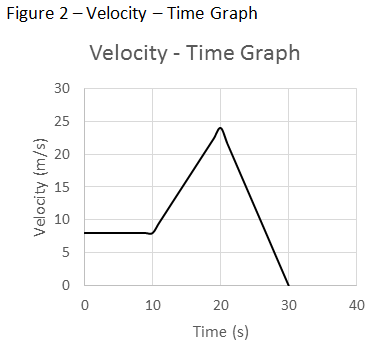
Question 1 |
8 m/s | |
16 m/s | |
24 m/s | |
32 m/s |
Question 2 |
1 | |
1.6 | |
2.4 | |
3.2 |
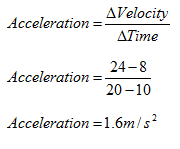
Question 3 |
0 | |
1.6 | |
2.4 | |
3.2 |
Question 4 |
 | |
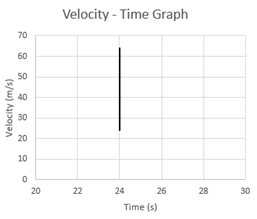 | |
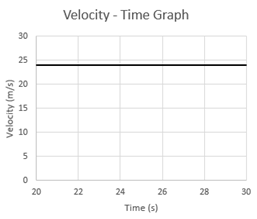 | |
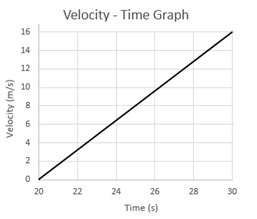 |
Question 5 |
First determine the distance traveled by the car from t = 0 seconds to t = 20 seconds by measuring the spacing of the oil drops. Then determine the velocity of the car by dividing the distance traveled by the time taken. | |
First determine the distance traveled by the car from t = 0 seconds to t = 20 seconds by measuring the spacing of the oil drops. Then determine the velocity of the car by multiplying the distance traveled by the time taken. | |
First determine the distance traveled by the car from t = 10 seconds to t = 20 seconds by measuring the spacing of the oil drops. Then determine the velocity of the car by dividing the distance traveled by the time taken. | |
First determine the distance traveled by the car from t = 19 seconds to t = 20 seconds by measuring the spacing of the oil drops. Then determine the velocity of the car by dividing the distance traveled by the time taken. |
Question 6 |
An acceleration of 0 m/s2 over the first 10 seconds followed by a positive acceleration over the next 10 seconds, followed by a negative acceleration over the last 10 seconds. | |
An acceleration of 8 m/s2 over the first 10 seconds followed by a positive acceleration over the next 10 seconds, followed by a negative acceleration over the last 10 seconds. | |
An acceleration of 0 m/s2 over the first 10 seconds followed by a negative acceleration over the next 10 seconds, followed by a positive acceleration over the last 10 seconds. | |
An acceleration of 8 m/s2 over the first 10 seconds followed by a positive acceleration over the next 10 seconds, followed by a negative acceleration over the last 10 seconds. |
|
List |
More Practice Tests:
ACT Main Menu >>
ACT English Practice >>
ACT Reading Practice >>
ACT Math Practice >>
